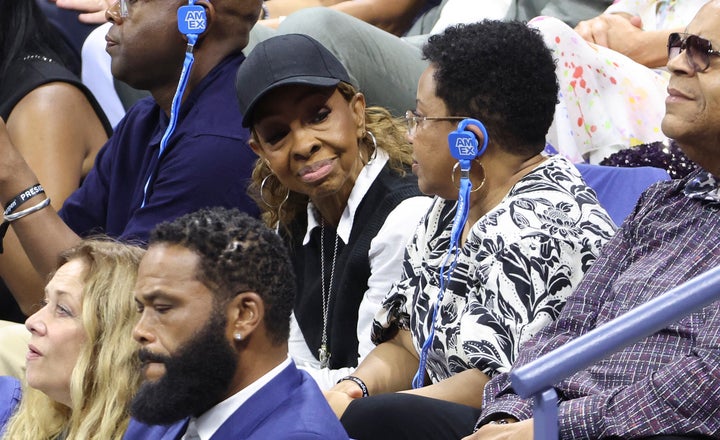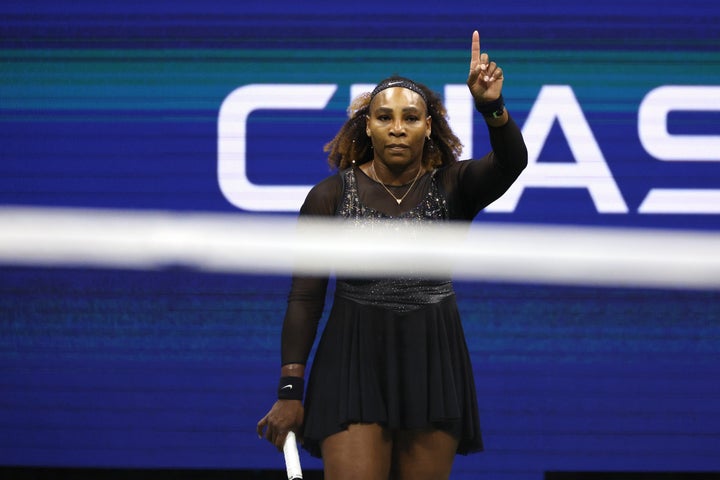[ad_1]
Most evenings this week, I have arranged my schedule around TV, hung on every thrilling plot twist, yelled at my screen and live-tweeted about how stressed I am, while scrolling through everyone’s tweets about how stressed they are too. (Same, Cher, same.)
It’s not the dragons show. It’s not that other big fantasy streaming spectacle that premiered this week. It’s the prime-time matches of the U.S. Open, and particularly each match featuring Serena Williams the GOAT, in what is likely the final major tournament of her storied career.
If you regularly watch tennis, or any live sports, you’ve very likely had the experience of becoming personally invested in it as a great television saga. I imagine you’re reading this and rolling your eyes, thinking, Duh, where have you been? But for more casual sports watchers like me, who only tune in once in a blue moon, it has been thrilling to rediscover how live sports can become a seismic cultural event. It’s been deeply satisfying to get invested in a particular outcome — and then open Twitter and see how invested everyone else is too.
Just like scrolling through Twitter on a night when a big prestige TV show is airing, there’s something incredible about the collective effervescence of the experience. We’re all watching this unfold together. On Wednesday night, when Serena was down a set during a rivetingly suspenseful match against the No. 2 ranked player in the world, Anett Kontaveit, I was extremely stressed… and then I wondered: Is Gladys Knight stressed too?

Jean Catuffe via Getty Images
At any moment, the narrative of the match could shift. Every small movement could deliver a surprise. If you look away even for a second, you might miss something spectacular. It’s not unlike watching a prestige TV show, where you only get the fullest experience if you stay attuned to every cutting line of dialogue, every tiny but crucial facial expression and hand gesture.
Here, though, there’s something remarkable about the simplicity of it. It’s not, for example, members of a sprawling rich white family scheming and backstabbing each other in an exotic locale, with high production values and dramatic music. It’s just two people (or four, if it’s a doubles match), volleying a ball back and forth, sometimes for hours on end. It’s mesmerizing.
And who better to play the starring role than Serena Williams? (Thursday night, we were lucky enough to get both Serena and her sister Venus in a rare prime-time doubles match.) There are few athletes more compelling and powerful to watch, even apart from the tennis itself. On Wednesday night, when the crowd booed Kontaveit for scoring a shot that just barely made it on the line, Williams waved her finger, and everyone instantly went silent. The queen must be obeyed.

Al Bello via Getty Images
In her post-victory interview, when ESPN correspondent Mary Joe Fernández asked if her performance this week has surprised her, Williams simply smiled and said: “I’m just Serena, you know?” The crowd roared.
With this year’s U.S. Open, there’s an added layer of emotional investment because of Williams’ impending retirement from professional tennis. We’re tuning in to each match to savor every moment with her — and hoping, each night, that it isn’t the last time we’ll see her on the court. So far, to everyone’s delight, she has delivered spectacularly.
Luckily, unlike a weekly prestige show, we don’t even have to wait very long for the next installment: Serena plays again Friday night at 7.
[ad_2]
Source link
